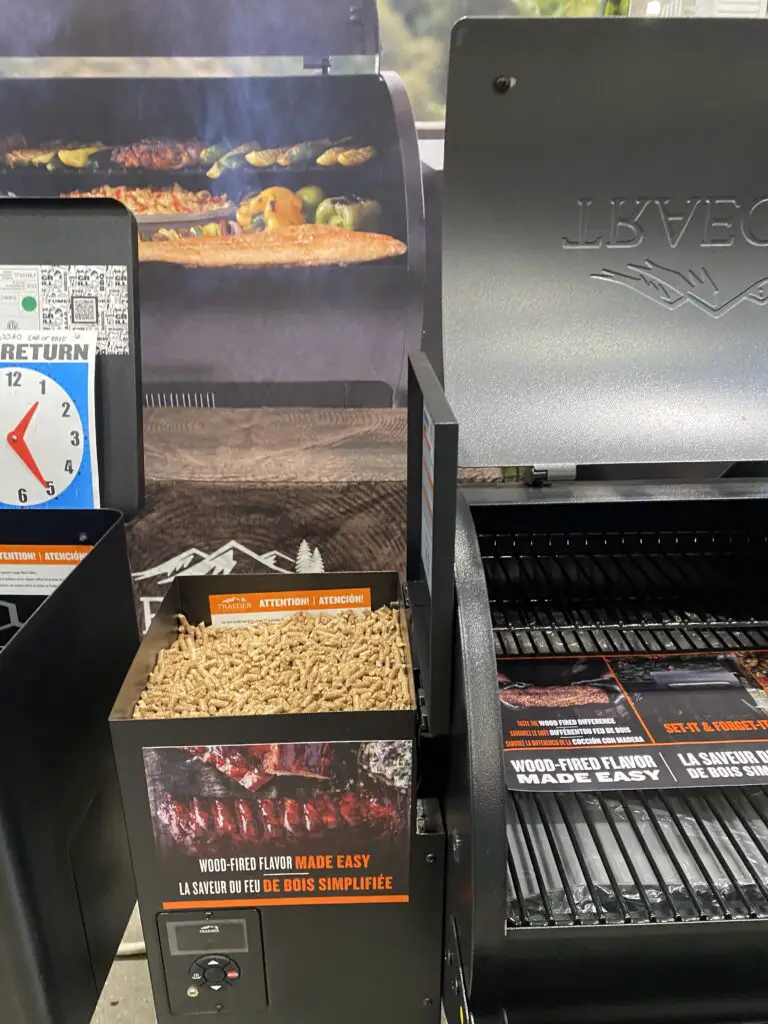We strive to provide you with authoritative, trustworthy, and expert advice. In doing so, the staff at bbqdropout.com performs extensive research, editing, and fact checking to every post on this webiste. If you feel that this article can improve, please feel free to reach us at staff@bbqdropout.com
Before continuing this article, I wanted to let you know that I have a YouTube channel where I showcase all sorts of video content related to BBQ. Subscribing would mean a lot to me, and I very much appreicate all the support!
Traeger grills can be amazing cooking instruments, but they do real on having a reliable fuel source.
If that fuel, wood pellets, is compromised, the grill won’t work well or at all. Just like a camp fire, the wood source used needs to be a quality fuel, dry and ready for use.

Like most things organic, wood has a habit of degrading if not maintained and cared for, and even processed wood pellets will deteriorate over time with bad storage, exposure and lack of monitoring.
Traeger Pellets Humidity
When provided at purchase, Traeger pellets are essentially completely dried and void of humidity altogether.
Every level of moisture has been pulled out of them in the fabrication process, and what is provided is a wood pellet that is compacted, ready to burn and extremely dry.

This makes it easy to use and ignite the fuel with a heating element when desired.
However, pellets and their ability to light can change over time.
Depending on where they are located, stored and changes in their environment can impact how the pellets perform when exposed to heat again later on.
Does Humidity Affect Traeger Pellets?
Humidity is a condition that affects everything, depending on the amount of humidity in the air.
For example, where humidity is very high, a significant amount of moisture is airborne and will attach itself to objects.
In the tropics, people perspire considerably in the heat.

Part of this is due to the body trying to cool itself off, but the significant wetness is also due to the high humidity levels of the environment as well.
In the desert, on the other hand, everything feels extremely dry and water evaporates quickly; humidity is extremely low and any moisture present gets dissipated quickly.
Where people live and the local humidity level needs to be considered when storing wood pellets or anything that is affected by moisture.
Does Humidity Affect Traeger Pellets?
Traeger pellets involve compressed wood, which makes it hard at first for moisture in the air to penetrate.
So, an initial opening of a bag of Traeger pellets is not going to automatically be affected by local humidity.
However, if that bag is left open, stored outside or in areas exposed to the local air, and the humidity is high, eventually the moisture will penetrate the wood enough and make it harder to light the pellets.
Even compressed wood starts to act like a sponge with enough exposure and pulls in moisture.
Is it OK to Leave Pellets in Traeger?
When pellets are left in the Traeger for the next use, one has to assume they are going to sit their exposed to the outside air.
While a grill cover blocks some of this exposure, even that won’t stop the local humidity from affecting the inside of the Traeger to some extent, and eventually affecting the pellets as well.

Those pellets that are exposed to the air the most will become the hardest to light the longer they go without a drying heat condition being nearby.
How do you get Moisture out of Wood Pellets?
Ideally, wet pellets or those exposed to a lot of humidity should be placed inside or in an environment with a significant amount of drying heat.
Inside a home, running an air conditioner or a heater will pull moisture out of the pellets over time and dry them out again.
They should be spread out to allow maximum evaporation versus keeping them piled in the bag, as moisture will still be trapped otherwise.
The more dry air exposure the pellets have, the better for removing the moisture they have built up.
While it won’t be possible to dry them out 100 percent without some kind of extraction process or direct heat application, i.e. a blow dryer for hours, you will be able to dry them out enough to improve ignition considerably.
Then, the trick is to just keep the pellets dry going forward if they have to be stored again.
How to Properly Store Traeger Pellets
Wood pellets should be stored in a location that is dry, insulated, and not exposed to normal outside air, which changes considerably from daytime to nighttime.
The air in the location should be dry and not be exposed to condensation either. Cloth bags or material net bags are better as they allow air circulation.
Plastic bags for pellets can trap moisture and create condensation pockets.
If the pellets have to be stored in a plastic bag, aerate the bag with holes so that air can flow and any moisture that occurs dries out.
Final Thoughts
Remember, even though pellets are compressed, wood has a natural tendency to soak up water.
Keep the pellets dry, inside the garage or home, and avoid open exposure where possible.
You want to enjoy your Traeger cooking immediately, not spend hours trying to dry out the fuel source.
A bit of prevention up front will save you hours of a headache later when you’d rather be cooking and grilling.
Robert is a certified Pitmaster, with over a decade of experience in smoking the best meats you’ll ever feast upon. He also has a Bachelor of Business Administration from the University of Texas at San Antonio. When he’s not researching technical topics, he’s most likely barbecuing in his backyard.
